Fishes
Media

Species Types
Scientific Name
Ichthyomyzon fossor
Description
The northern brook lamprey is a great example of a nonparasitic lamprey. While lampreys as a group are famous for being fish parasites, brook lampreys are essentially bottom feeders.
Media
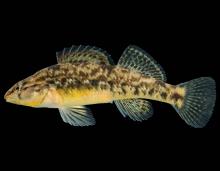
Species Types
Scientific Name
Etheostoma caeruleum
Description
The rainbow darter is a common and characteristic darter in the Ozarks. Where it occurs in our state, it is the most abundant darter in most streams of all sizes. Breeding males are brilliantly colored with reddish orange red and greenish blue.
Media
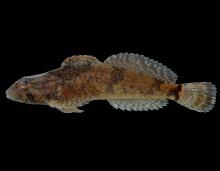
Species Types
Scientific Name
Cottus bairdii
Description
In Missouri, the mottled sculpin occurs in the Niangua River system, some tributaries of the Lake of the Ozarks, the Meramec, Gasconade, and Osage river systems, and some other eastern Ozark streams. It is most similar to the Ozark and knobfin sculpins.
Media

Species Types
Scientific Name
Cottus hypselurus
Description
The Ozark sculpin occurs only in the Osage, Gasconade, and Black river systems, in the Ozarks of southern Missouri and northern Arkansas. It is most similar to the mottled and knobfin sculpins.
Media
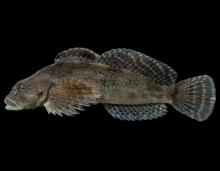
Species Types
Scientific Name
Cottus immaculatus
Description
The knobfin sculpin occurs only in the Current, Eleven Point, and White river drainages in the Ozarks of southern Missouri and northern Arkansas. Until 2010, it was considered the same as the Ozark sculpin.
Media
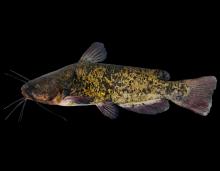
Species Types
Scientific Name
Ameiurus nebulosus
Description
In Missouri, the brown bullhead occurs in quiet, clear waters in wildlife refuges in southeast Missouri. Elsewhere in the state, it is stocked and possibly escapes. It has mottled sides and an elongated barbel at the corner of the mouth.
Media
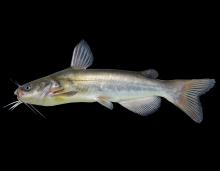
Species Types
Scientific Name
Ameiurus catus
Description
The white catfish is often stocked in fee-fishing lakes and other private waters. It sometimes escapes into natural stream systems. Unlike our other bullheads, it has a moderately (though not deeply) forked tail fin.
Media
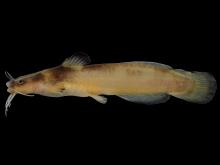
Species Types
Scientific Name
Noturus exilis
Description
The slender madtom is the most common madtom in the western and northern Missouri Ozarks, in small and medium-sized streams that have gravel bottoms, clear water, and permanent flow. It is scarce in the southern Ozarks.
Media
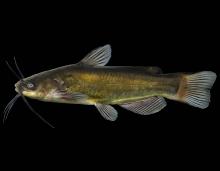
Species Types
Scientific Name
Ameiurus melas
Description
The black bullhead is widespread in Missouri. It is the most common bullhead catfish in north and west portions of the state. It has dusky or black chin barbels, and the edge of its tail fin is notched, not straight.
Media

Species Types
Scientific Name
Esox masquinongy
Description
The muskellunge is long and slender, with a mouth full of razor-sharp teeth. This big, nonnative pike is stocked in selected lakes in the Ozark region and near St. Louis.
See Also


Media

Species Types
Scientific Name
Amphiuma tridactylum
Description
The three-toed amphiuma is an eel-like, completely aquatic salamander. It has very small forelimbs and hind limbs, each with three tiny toes. In Missouri it’s found only in the Bootheel region.
Media

Species Types
Scientific Name
Siren intermedia nettingi
Description
The western lesser siren is an eel-like, aquatic salamander with external gills, small eyes, small forelimbs with four toes, and no hind limbs. In Missouri, it’s found mostly in the Bootheel and northward in counties near the Mississippi River.
About Fishes in Missouri
Missouri has more than 200 kinds of fish, more than are found in most neighboring states. Fishes live in water, breathe with gills, and have fins instead of legs. Most are covered with scales. Most fish in Missouri “look” like fish and could never be confused with anything else. True, lampreys and eels have snakelike bodies — but they also have fins and smooth, slimy skin, which snakes do not.





















